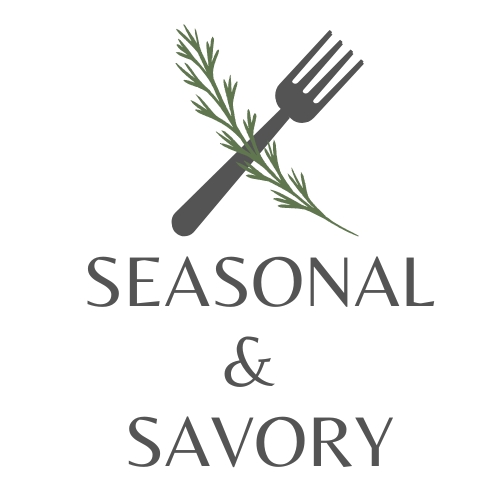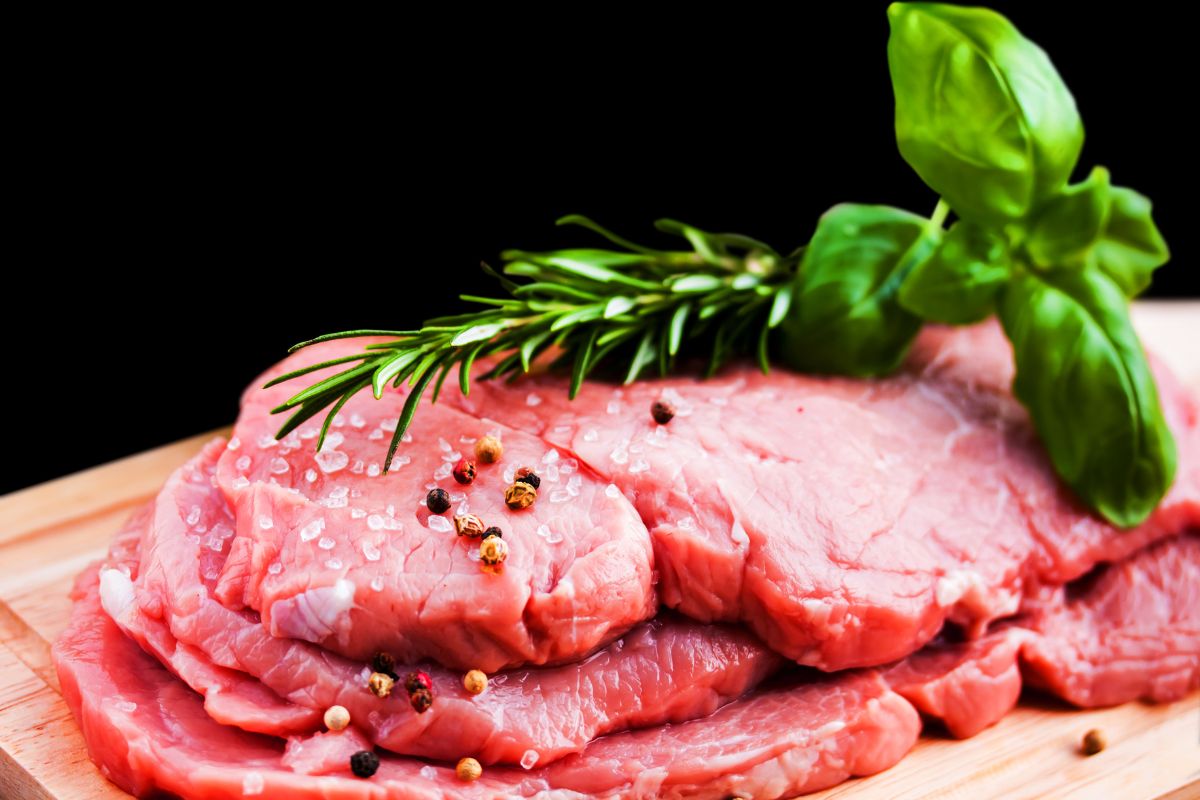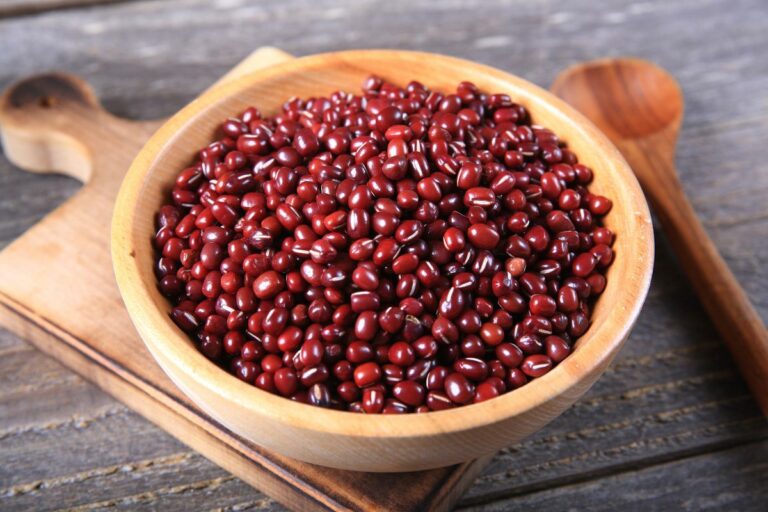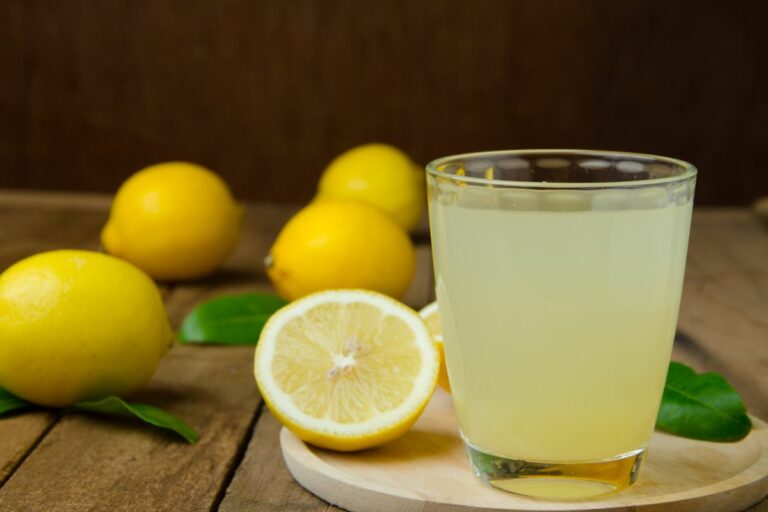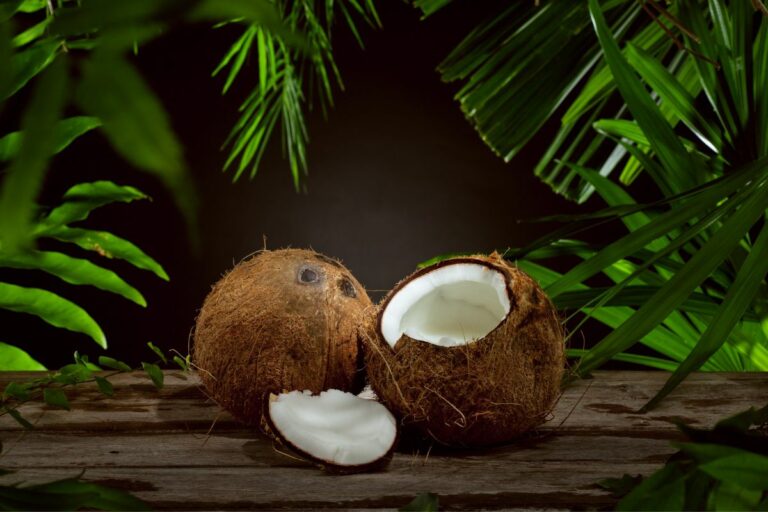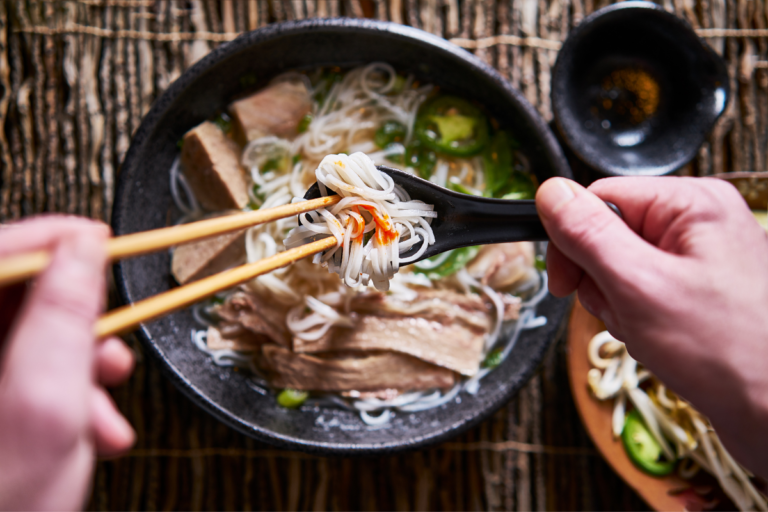What Does Veal Taste Like?– An Explanatory Guide of the Taste of Veal
A few days back, I heard one of my colleagues was obsessed over some meats. So, I asked her about that food, and she told me about “Veal.” I was not surprised as I already knew what it tasted like. It is a mild beef that you will want to consume repeatedly.
So, what does veal taste like? Does it taste like beef or chicken? Does veal taste good?
Well, if I say veal is the beef but not absolute beef. They come from the same animal. Hence, veal has a pure distinction from beef. In short, veal is a cut of meat from a non-dairy, young male or female cow. More precisely, the male calves are primarily selected for preparing the veal as they cannot produce milk. This special meat tastes more delicate, tender, and neutral than beef.
Hold your horse! There are more things to discuss veal. I am here to share different facts like the taste, texture, variations, nutritional benefits, culinary uses, and others about veal. It would be nice of you to continue reading the whole blog.
What is Veal? – The Definition
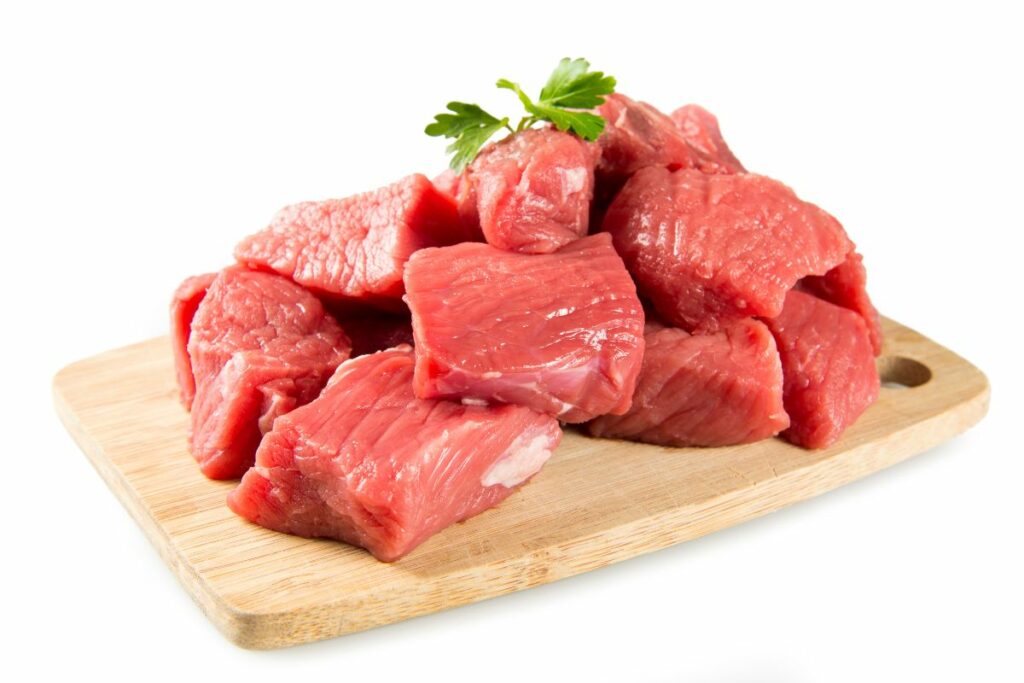
Veal is another delicate meat you may find at the stores. It is produced from young cows (calves), especially those who want lower fats and more nutritional benefits than beef. Now, you may think that they both have similar tastes. But veal is more significant. For example, this meat is soft, pale in color, and less chewy, giving an exotic experience.
There are farms dedicated to farming cows only to produce veal. It means they sell or slaughter the young calves to offer the market this delicate meat. After all, an older cow is not suitable to taste like veal.
The Texture of Veal
So, what is the texture of the veal like? How can you identify a veal?
Veal has unique, smoother, silkier, and more fine-grain texture than beef. If you prepare a veal dish, you can get a pleasing velvety, and juicy feel while chewing it. Moreover, the tenderness of immature calf muscles gives it a distinct texture. You may see a slight marbling on this meat. Also, it does not contain excessive fat like beef. That’s why the cooking process is longer and slower than beef. You can slice the veal even with just a fork when well-prepared.
Varieties of Veal
What are the several types of veal? People keep asking questions about veal, and this one is obvious. You can find veal in different shades or textures. They come from calves of different years old. Also, these calves are fed either grain or grass.
Even they may belong to barns or open fields. Thus, you can call all the veal the chicken of red meat.
You can find five common variations of veal:
- Bob Veal: It is the youngest or most tender form of veal. Farmers collect this meat from only 5-7 days’ calves. Again, you may need to spend more money on this veal.
- Milk-fed Veal: When the calves are 18-20 weeks old, this type of veal is produced by slaughtering them. Usually, it looks ivory in color to cream with a firm texture.
- Red Veal: A typical veal you may find at the stores. You can also call it grain-fed veal. Typically, calves of 22-26 weeks are chosen to prepare red veal.
- Rose Veal: Another popular variety comes from 35 weeks of old calves. You will love the pinkish texture of this meat.
Besides these variations, you may find another veal that comes from calves of green pastures. Usually, they remain 24 weeks aged for preparing this “free-ranged, raised veal.” Some other forms of veal can be chops, roasts, and ground meat. Veal chops are collected from the rib or loin, roasts from the leg, and ground veal from trimming these cuts.
History of Veal
Historians date the first sign of veal in ancient Rome. There was a belief that the best veal has pale pink to light greyish pink. Thus, there was controversy over the preparation of veal. Many Romans tagged veal as a product of the cruelty of humans. After all, they thought animals were treated, transported, and slaughtered barbarically.
Therefore, people started picking male calves to reduce that cruelty or guilty feeling. It helped them save female calves used to produce dairy products.
What Does Veal Taste Like? – Interesting or Dull?
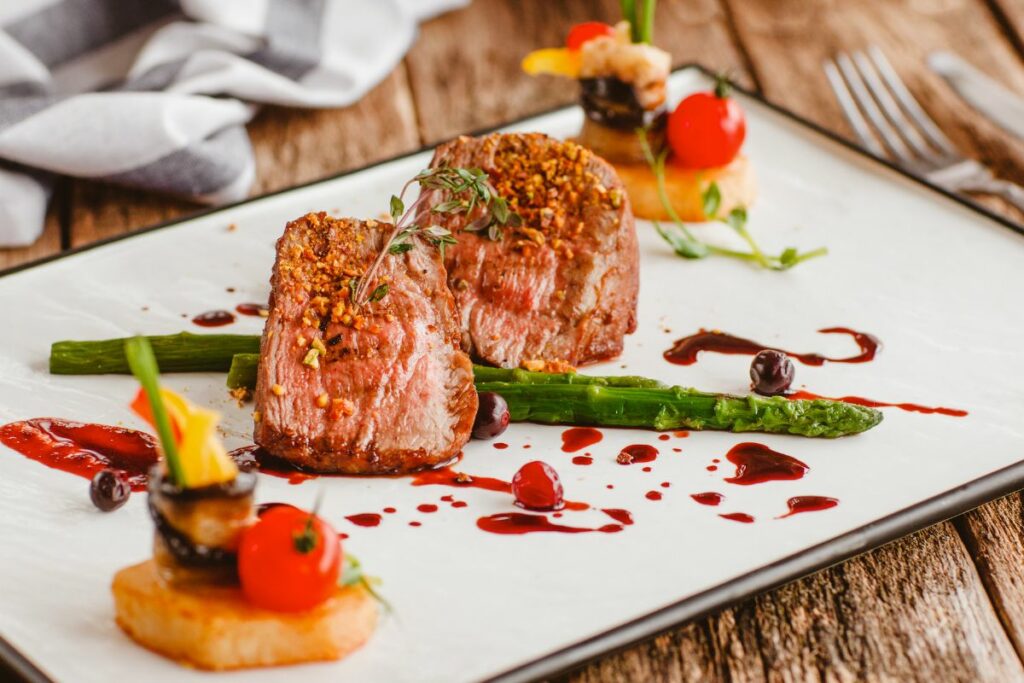
So, how will it taste like to have veal as a meal? If you are looking for a meaty and refreshing flavor in the same meat, I suggest you have veal at least once. Some people compare veal tastes to chicken or pork. Again, it is a moist and fatless food to have with other dishes. The veal is soft and contains less fat, so you may easily digest the meat.
Veal has different taste profiles depending on its type. For example, bob veal offers the smoothest and mildest flavor. The main reason behind it is that it comes for the youngest calves. So, the texture appears jelly-like, and you will love to chew it.
Another example is free-range, raised veal, which provides a characteristic taste. The way the calves are taken care of for this veal is the reason for this taste. This veal has a leaner and firm texture.
The taste of veal also depends on how you cook or follow any recipe. You may add spices or salt and pepper to get different tastes. Consequently, there are many veal recipes available online that you can easily prepare at home or a restaurant.
Here is a real-life experience that Daym Drops (YouTube channel) shared: “HOW DOES VEAL PARMESAN TASTE?”
What Does Veal Liver Taste Like?
Veal liver is popular among many food lovers. They consider it a delicacy item for its moderate, natural, earthy flavor. Likewise, you won’t get bothered by its tenderness. It is more subtle than beef liver in taste. Chefs suggest separating the tendons and membrane from the liver before preparing it for cooking.
In many countries, veal liver stew is very famous. But you may try it by frying on the pan with a glimpse of butter, sauce, and other ingredients. It will still taste sweeter than beef liver.
Does It Taste Like Gamey?
A big NO! Veal flavor has no similarity with gamey. You may know that gamey tastes spicy with an earthy tone. It is usually found in venison-type meats. Alternatively, veal has a lovely flavor that everyone would love, especially tender meat lovers.
What Are the Differences Between Beef and Veal?
You may now think about the veal vs. beef matter. A few things make veal different from beef. In this part of the blog, I will clear the confusion between these two types of meat.
The first thing to determine is the color of the meat. It is easily identifiable to know which one is beef or veal. Typically, you can consider the meat as beef if it is darker brownish. If you get a much lighter color with a pinkish tone, it is veal.
Next is its texture when you cook or are about to cook it. Veal has less presence of fat. So, it looks plain, while beef has a red color with a fatty texture. When you cook beef, you get a robust meaty flavor. On the other hand, veal offers refined flavor with a delicate texture.
You may also consider veal’s usage in a wide range of dishes. As it is fat-free, people often keep it in their healthy diet. Besides all these facts, veal is a better choice for its nutritional contents (I will discuss in the latter section).
What Are the Differences Between Veal and Lamb?
Veal vs. lamb – another discussion goes on. They have similarities and dissimilarities.
They both are red meat and are collected from young livestock. Also, both are rich in protein and other healthy nutrition. You may have both as medium rare, pink in their middle part.
Hence, veal is from male calves, while lamb meat is from young sheep. So, their tastes are different. For example, you can get a more intense taste in lamb meat.
In prepping veal, there is no mandatory to season it heavily. Also, it doesn’t require too many spices or ingredients. Alternatively, you can save time by cooking lamb. But there is a risk of overcooking it as it takes lesser time to be well-cooked.
How Do They Make Veal?
Calves selected for producing veal are specially treated. Farmers give a low-iron diet to the cattle to keep the flesh pale. It helps maintain the meat’s taste, texture, tenderness, and premium feel.
You can find three common grades of this meat. They are:
- Prime veal
- Choice veal
- Good veal
In the US, most veal is tagged as having good grades. Also, the raising of calves may be an identical factor for the quality and grade. A low-quality veal comes from cattle raised in crates.
The people in this business make veal as chops, roasts, or ground meat. Sometimes, you may get veal steaks which can be must-try food items. Dishes like veal parmesan and marsala are also good to taste.
One important thing you should know is that you should not consume raw veal. After all, raw meat may have unhealthy bacteria or germs that weaken our bodies. There is also a risk of food poisoning. Thus, you should make a veal dish at a minimum of 145°F (62°C) to eliminate all those parasites.
What are the Nutritional Benefits of Veal?
Besides taste, veal is also famous for having nutrients in it. The USDA has given the ideas about these nutrients in this way:
| Nutrients | Value (in 100g veal) |
| Calcium | 12mg |
| Energy | 197kcal |
| Fatty acids (Total saturated) | 5.108g |
| Iron | 1.37mg |
| Magnesium | 31mg |
| Potassium | 198mg |
| Protein | 18.58g |
| Sodium | 103mg |
| Sugar | 0g |
| Vitamin B-12 | 2.28ug |
| Water | 66.16g |
| Zinc | 2.51 mg |
If you love to keep a nutrient-rich food in your diet, you can consider veal as an ideal item. For example, you are consuming 3oz. serving, your body gets ≤10% of daily calories (around 2000 calories) and ≥10% of daily micronutrient fulfillment. These are enough to keep you active.
Some other vitamins, minerals, and proteins are also found in veal. Among them, vitamins B1, B2, and B3, and minerals like calcium and sodium are available. Omega-6 in veal helps to improve our digestion. Alternatively, the low cholesterol in veal makes it ideal for maintaining our weight and fitness of organs.
As shown in the table above, vitamins help strengthen our body muscles. Also, they reduce body fatigue in due course. Zinc is required to maintain the functions of our immune system and cognitive development. Additionally, the least or no fat in veal is excellent to keep ourselves out of the risks of obesity and vice versa.
Veal has an incredibly lower quantity of fat, unlike beef which has a larger fat percentage. Per 100 grams, veal may contain 15% less fat, double in ground beef at the same weight (30%). However, a specific portion of the cow’s body determines the fat content ratio. So, you can consider these statistics as general guidelines. Additionally, the butcher can also work more to remove the fatty part from the veal (if available).
Overall, veal is a healthy food for us. It can fulfill our craving for meat and nutrient needs.
What are the Culinary Applications of Veal?
You can find many methods of using veal in culinary jobs. Starting from some conventional dishes, veal is a top-rated and compulsory item. For example, many Italian and French recipes include this meat which increases the taste and quality of the dishes.
In Mediterranean cuisines, you can include veal. Some people would suggest having veal in Jewish styles of dishes. Again, you can pair it with other food items as it requires less seasoning.
Poaching the veal with white wine and veggies can be a great idea. Pair it with carrots or potatoes for a delicate taste. But you should take enough time to have the best taste of veal in these recipes. For instance, you should wait in the kitchen till you see veal falls apart and sauced turned into stock.
A common Italian veal dish is Vitello Tonnato. You can consume the meat with a hint of seafood. Often, you can use the veal as a filler of baked items.
Also, you can try another recipe known as pan-fried veal chops plus lemon and rosemary. (Source: Foodandwine). According to this recipe, you should start rubbing the meat with some olive oil, rosemary, and a bit seasoning before putting it into the air fryer using butter. Please wait 15 minutes and serve with lemon drops after taking it off.
Here is a video of a pan-seared veal chop: https://www.youtube.com/watch?v=ZzEhbyx8KxI (Courtesy: Bruno Albouze YT channel)
Whatever recipe you follow, ensure the temperature is above 160°F (USDA rule) though many cook it at a minimum of 145°F (62°C). Also, wait at least 3 minutes before you start eating the food.
How can You Consider the Veal as Best Cooked?
Dry and moist heat are the two best methods to cook veal.
- In the dry heat method, you can cook veal with tender cuts. They can be loin, ribs, leg cutlets, and veal patties to cook as a stir-fry, grill, roast, or pan broiling.
- In the moist heat method, you can work with steak cuts and veal breasts to stew in a broth. You may also use this method to braise the meat in prepping a smooth curry to eat with rice or flatbread. But you should marinate the veal for a couple of hours to ensure it is entirely done.
For the best cook, you may add some spices to the dish like salt, pepper, basil, thyme, etc.
Some best-cooked veal dishes are:
- Ground Veal Ragout
- Veal chop
- Veal Burger
- Veal cutlet coated in breadcrumbs
- Veal Meat Mushroom Marsala
- Veal ham parmigiana
- Veal Osso Buco
- Veal Schnitzel
Frequently Asked Questions
Here are some relevant queries about veal tastes.
- Is veal costlier than beef?
- The raising, leaning, and being healthier of veal set its value of it higher than beef and chicken. But eating veal is safer and more beneficial for us than other meats.
- Does it take a long time to cook veal?
- It depends on the recipe, but generally, veal can be cooked in about 15 minutes to 2.5 hours.
- What happens if I overcook veal?
- If you overcook veal, it will become tough and dry. It should be cooked just until it’s no longer pink in the center. Overcooking veal can result in a dry, chewy texture.
- Where can I buy veal from?
- Veal can be purchased from many local butcher shops, specialty meat markets, and some grocery stores. You can also purchase veal online from specialty meat companies.
Final Verdict
Here is a summary of the whole blog regarding “what does veal taste like”.
Veal is an excellent source of protein and other essential nutrients to keep us healthy. It is a delicate meat from non-dairy, young, male or female cows that is softer, more neutral, and more tender than beef.
It has five common variations: Bob, Milk-fed, Red, Rose, and Free-ranged, Raised veal. It has a unique, smoother, silkier, and more fine-grain texture than beef.
You can prepare it by using dry and moist heat methods. Also, it is essential to note that you should cook veal at a minimum temperature of 145°F (62°C) to ensure it is safe to consume. Veal is a popular and delicious delicacy. You should not regret not trying it!
